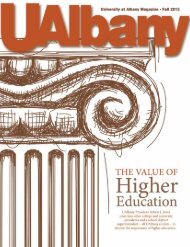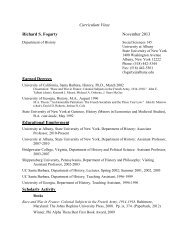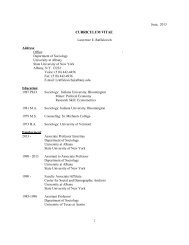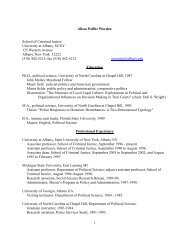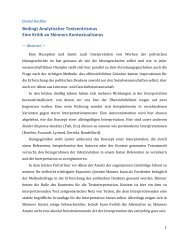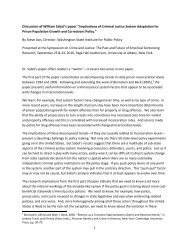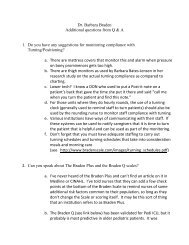Walking Corpses & Conscious Plants: Possibilist Ecologies in ...
Walking Corpses & Conscious Plants: Possibilist Ecologies in ...
Walking Corpses & Conscious Plants: Possibilist Ecologies in ...
You also want an ePaper? Increase the reach of your titles
YUMPU automatically turns print PDFs into web optimized ePapers that Google loves.
B<strong>in</strong>gham 8<br />
Worlds, modal realism is ultimately a strategy of determ<strong>in</strong><strong>in</strong>g the verisimilitude of<br />
<strong>in</strong>tentionality as well as other theories which seek to def<strong>in</strong>e subjective experience. Modal<br />
realism h<strong>in</strong>ges upon the claim that there are countless possible worlds which are real as<br />
experienced actuality * ; and each differs only <strong>in</strong> content rather than k<strong>in</strong>d. Each of these<br />
possibilia is then an irreducible entity and therefore is isolated from all others spatially<br />
and causally:<br />
...there are no spatiotemporal relations at all between th<strong>in</strong>gs that belong to different<br />
worlds. Nor does anyth<strong>in</strong>g that happens <strong>in</strong> one world cause anyth<strong>in</strong>g to happen at<br />
another. Nor do they overlap; they have no parts <strong>in</strong> common, with the exception,<br />
perhaps, of immanent universals exercis<strong>in</strong>g their characteristic privilege of repeated<br />
occurrence. (Lewis 2)<br />
Even though external environments change as we move from one possible world to<br />
another, there rema<strong>in</strong>s some constancy which repeatedly manifests with<strong>in</strong> subjects.<br />
Possible worlds are engaged <strong>in</strong> the realm of actuality; so even though there may not be a<br />
direct causal relationship between these possible worlds and ours, there is certa<strong>in</strong>ly a<br />
reason why they are imag<strong>in</strong>ed. This reason<strong>in</strong>g suggests a desire to identify specific<br />
natural qualities associated with conscious existence. Such considerations act as tests for<br />
moral ideologies or ethical beliefs. Interrogat<strong>in</strong>g these concepts can reveal when there<br />
are discrepancies between <strong>in</strong>tentions and actions, or behaviors and their justifications—a<br />
valuable exercise especially <strong>in</strong> times of war and economic crisis. Lewis describes<br />
possible worlds as particularly useful devices for these types of comparison: “The other<br />
worlds provide a frame of reference whereby we can charaterise our own world” (Lewis<br />
22). This referential function is especially valuable <strong>in</strong> political discourse. When we can<br />
identify familiarity with<strong>in</strong> spaces that appear totally closed from our own experience, we<br />
can reconsider subjectivity and address events or behaviors which are <strong>in</strong>congruous with<br />
*<br />
The Stanford Encyclopedia of Philosophy provided this def<strong>in</strong>ition: “Actuality for x is the realm that<br />
<strong>in</strong>cludes x. Actuality for us is the maximal spatiotemporally related whole of which we are<br />
(mereologically) part.”



